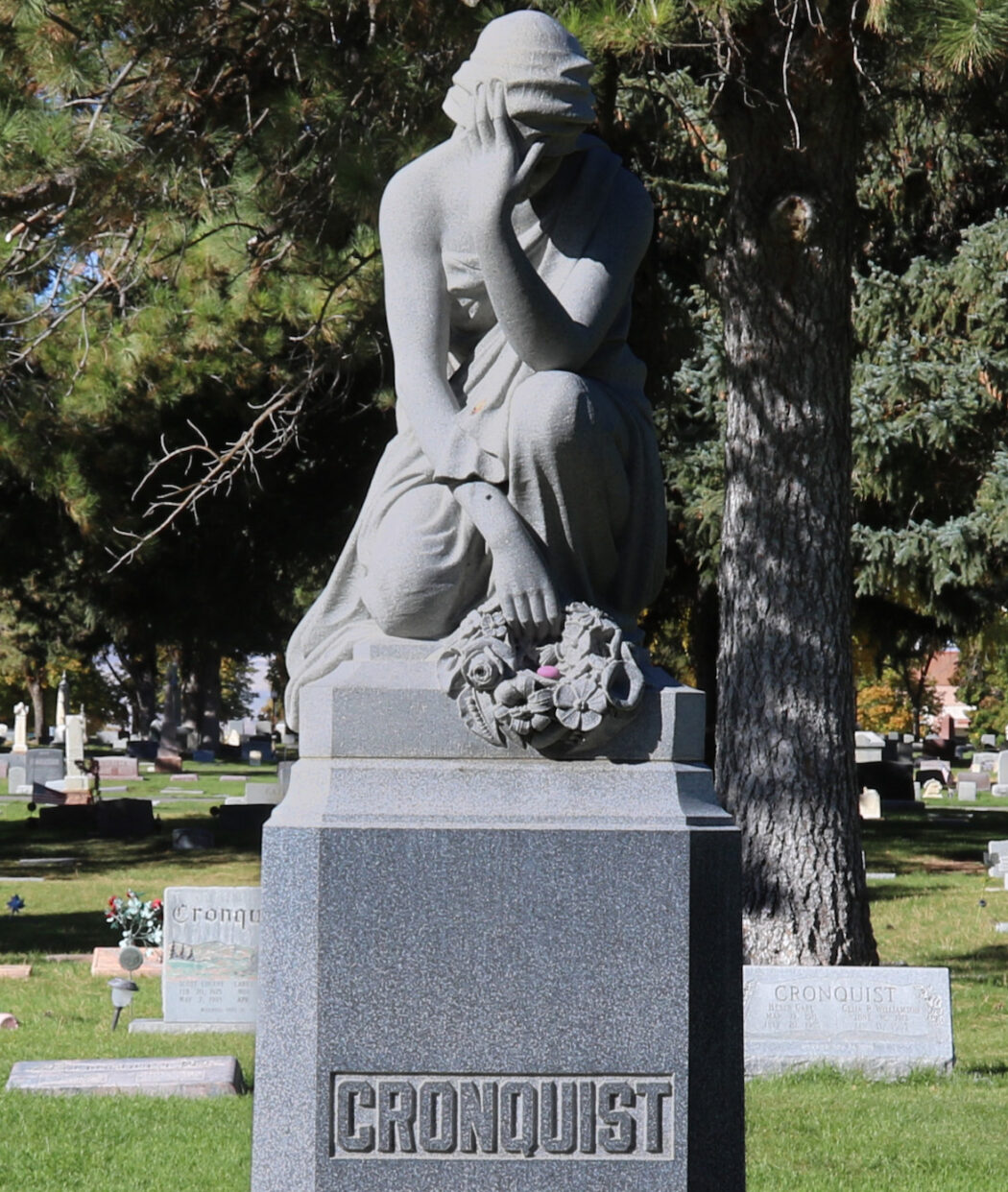Weeping Lady legend put to rest
A lady resides in Logan Cemetery near Utah State University. She sits atop a stone, clutching a bunch of flowers with one hand and the other on her forehead. This lady is none other than the legendary Weeping Lady.
Legends of the Weeping Lady have come about in many forms for many years. USU students have always invented stories about where she came from, and what she does at night.
One such legend emerged in 1979. Ron Christiansen was a student at USU at the time. His older brother told him a story about the Weeping Lady, and the legend around her.
He said she had a child, and only four months later the child died from a rare disease. The mother of the child erected a monument of her weeping on top of the grave to convey her sorrow for the child.
The older brother continued to tell Christiansen that if they shine their headlights onto the Weeping Lady, then she will jump off the stone and run around, and if you shine your headlights again, she will go back to her gravestone to weep.
The older brother said you can also feel the tears on the Weeping Lady’s cheeks.
Another student in 1969, Val Dawson, has a different legend for the Weeping Lady. This one is more accurate to the true story than the last.
Dawson said one of her friends told her the Weeping Lady had a family of eight with her husband. The husband was not a good person and everyone in the family hated him.
One day he became ill and was on his deathbed. Right before he died, he put a curse on the family, saying that every six months the eldest child would die. Once all the children die, then the mother will also die.
The family didn’t believe him until six months after his death, when the eldest child died of pneumonia. Then six months after that, the next eldest child died. This continued until the mother died six months after the final child.
A grave was erected to show the grief of the mother over her children. Dawson’s friend said you can still hear the mother weeping over her dead children and can even feel the tears on her cheeks.
Current students at USU have some of their own experiences.
Mara Berringer, a USU senior, said whatever the real story is, she knows it has something to do with children.
“I think the statue is of a weeping woman because all her children have passed away,” she said.
Another student, Heidi Buhler, hasn’t even heard of the legend of the Weeping Lady. But she said folktales in general can be fun to hear, especially around Halloween.
“It’s just something to believe in and make you a little scared, but I don’t know if they are true,” she said.
Despite all of the entertaining legends, there is some truth behind the story of the Weeping Lady.
Amelia Cronquist came to Utah from Denmark in 1872 with her brother. She lived in Salt Lake City for a year before she moved to Cache Valley.
Once in Cache Valley, she met her husband and married him in Salt Lake City on Jan. 22, 1880. While the couple lived together, they started a family and had eight children.
Unfortunately, she and her husband lost five of these eight children. Amelia died on Jan. 8, 1914 with only three of her children outliving their mother.
Her death was a big deal in Logan because her husband, Olif Cronquist, was the city commissioner. A funeral was held for her in the Logan Tabernacle, and an entire article dedicated for her was on the front page of the Jan. 13, 1914, The Journal issue.
Everyone in the city thought she was an amazing lady. She looked out for everyone she was around.
Olif erected a gravestone in her remembrance. This gravestone is what we now call the Weeping Lady.
The gravestone is representative of the Logan Cemetery as a whole. The people that are buried there represent the people who lived in the city: strong people who had tough lives but still went out and lived them to the maximum.
Amelia was just one of those people. After suffering the loss of five children, she has earned her spot in the cemetery and on that stone.
-Jack.Johnson@usu.edu
Featured photo by Aspen Marshall

